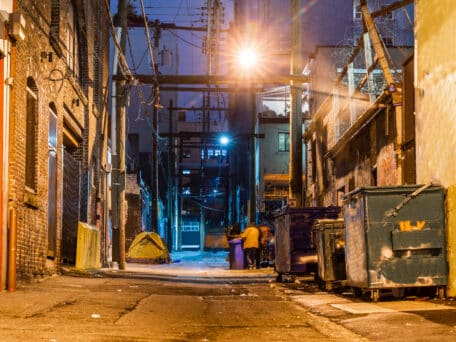It’s well known how Sound Transit caters to Seattle, and to the demands of Seattle politicians. Time and time again, the transit agency has been exposed for its Seattle-centric tendencies.
But, perhaps no other plan pushed by Sound Transit has favored Seattle more than its current $54 billion (that’s BILLION, with a B) scheme, Sound Transit 3 (ST3).
In light of the ST3, we’re highlighting how Sound Transit caters to Seattle… and that ultra-liberal city’s politicians.
Sound Transit’s Seattle-centric agenda.
Sound Transit’s ST3 disregards much of the Eastside. Yet, it expects — and, indeed, relies on — suburban taxpayers to fork over millions for expensive light-rail boondoggles to various parts of Seattle, like Ballard and West Seattle.
Every year, Renton residents pay about $23 million in Sound Transit taxes. Yet, over the last two decades, they have seen little to no services for their hard-earned dollars. In fact, only two Sound Transit Express bus routes pass through the city. ST3 does next-to-nothing to change Renton’s circumstances.
And, Renton is not alone.
Sound Transit officials recently admitted that they will spend “only 18% of ST3 rail and bus money on service in East King County” but is happy to “funnel double that, 36% of new tax money, to serve people living in Seattle and the immediate area.”
If Sound Transit cared about taxpayers on the Eastside, it would work with various city councils to produce services that meet the demands of the growing population — like more Bus Rapid Transit (BRT), not light rail. Unfortunately, deaf to Eastside concerns, ST3 only promotes the transit agency’s light rail obsession.
ST3 places light rail — and how light rail serves Seattle — as its primary objective. For the Eastside that’s understandably frustrating, especially considering the fact that adding BRT on I-405 could be done for far less money, serve far more people, far quicker, than pouring billions more into light rail which will serve relatively few Eastsiders.
But, it’s not just ST3’s light rail-obsessed plan that favors Seattle. Recently, Sound Transit “officially made the case that the whole region should pay for the second downtown Seattle tunnel.” The scheme follows a philosophy often trumpeted by officials that defines “sub-area equity” as “an integrated, regional system.” In other words, local money doesn’t necessarily benefit local areas… it benefits Seattle.
Apparently, the Sound Transit board knows what is best for all taxpayers because it reserves the “flexibility to determine what constitutes a benefit in the first place.” And, a project “doesn’t have to be physically in one area” to provide a benefit to that area.
Of course, the area that “benefits” from throwing sub-area equity away is Seattle.
Sound Transit caters to the demands of Seattle politicians
As Shift recently reported, Seattle City Council member Debora Juarez really, really wanted ST3 to include a low-value 130th Street station in her North Seattle district. Apparently, the first $50 billion version of Sound Transit 3 (ST3) had light rail heading north from Northgate, past 130th, and stopping at 145th Street before continuing north.
That didn’t sit well with Juarez. So, she threw a fit and threatened to publically oppose ST3 if her favorite station was not added to the revised $54 billion plan. And, as they so often do, Sound Transit officials just decided to grab more taxpayer dollars to surrender to her demand.
ST3 now includes a station at 130th for the price of $80 million. Here’s the kicker: the station was left out of the original plan because of low number of riders who would benefit.
But, hey, it’s still in Seattle… and a Seattle politician made the demand. That line of reasoning is enough for Sound Transit — at least enough to justify spending an additional $80 million of taxpayer dollars.
It’s interesting to contrast Sound Transit’s reaction to Juarez as opposed to its reaction to Eastside politicians — particularly in Renton — who just wanted BRT service for their taxpaying residents.
One Sound Transit board member admitted that there was “no formula” for decisions made on ST3. We’d venture to argue that there is, in fact, a formula and it involves putting Seattle first and catering to Seattle politicians.




